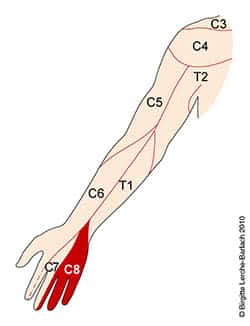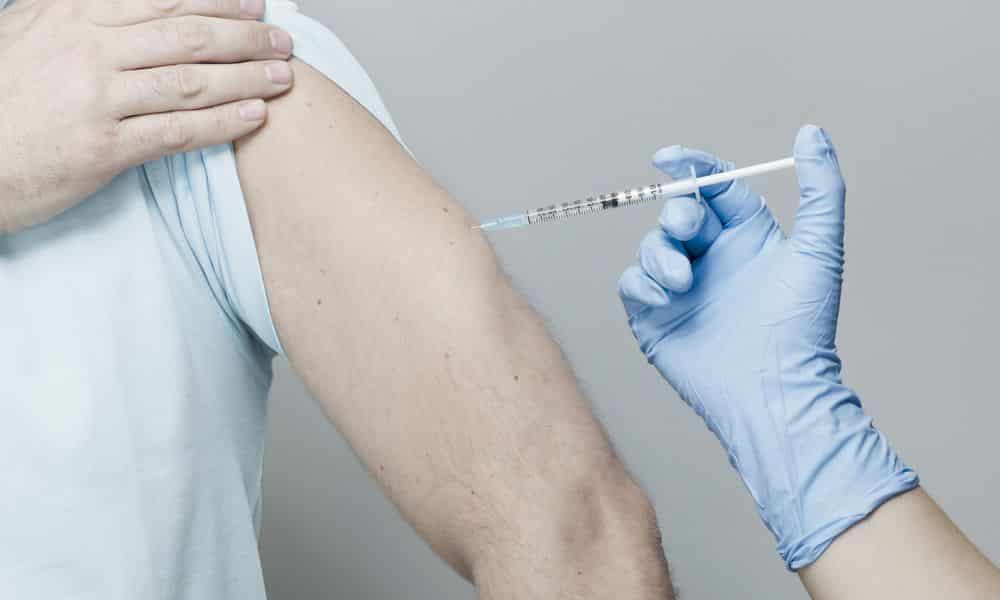
Shingles (Herpes Zoster)
Shingles is a neuropathic condition that really lives up to its name. Shingles is also known as Herpes Zoster and provides a characteristic painful skin rash in the affected nerve area (dermatome).
The diagnosis is due to a reactivation of the chickenpox virus called Varicella zoster. The condition can cause severe nerve pain and is due to the virus physically traveling through the nerves to the nerve endings in the skin - and causing infectious blisters (which can cause chickenpox to someone who has not had it - it can not be infected with shingles).
Follow and like us too Our Facebook page og Our YouTube channel for free, daily health updates.
In the article, we will review:
Symptoms of shingles
The reason you get shingles
Treatment of herpes zoster
+ Medicines for shingles
+ Herpes zoster vaccine
In this article you can learn more about shingles and the cause of the diagnosis, symptoms, prevention, diagnosis and treatment of this clinical condition.
Are you wondering something or do you want more of such professional refills? Follow us on our Facebook page «Vondt.net - We relieve your pain»Or Our Youtube channel (opens in new link) for daily good advice and useful health information.
Symptoms of Shingles (Herpes Zoster)

The condition usually starts by experiencing that an area of the skin is sore or that it dots in the skin. This may persist for about two to four days before a rash is formed there. In some, these pains can be severe and cause nerve pain that follows the entire affected nerve.
The previous, nonspecific symptoms of shingles can include headaches, mild fever and fatigue. Before the symptoms turn to more specific symptoms - such as:
Burning pain
Hypersensitive skin
Itching
Numbness
tingling
Sharp, rising nerve pain along the nerve root
It is important to note that shingles affect a single dermatoma (an area innervated by a single nerve) and only one side of the body. This means that the rash will only occur in this area - which is characteristic and unique to shingles.
For example, shingles in the C8 nerve root may cause a rash down the arm, but primarily in one lower half of the hand (see illustration). The rash will gradually break down and disappear. But in some more serious cases, it can leave physical scars.

Source: Birgitte Lerche-Barlach.
The most common condition is that the condition hits the chest or face. But the diagnosis can in theory occur in any dermatome - including:
The eye
Ear
mouth
Tongue
We will go into this in more detail in the article.
Diagnosis of herpes zoster
Since the clinical presentation and rash are so unique (dermatologically conditioned), only a visual examination from the doctor is normally required to establish the diagnosis. But there are also laboratory tests such as the Tzank test that can help identify the disease.
Varying Pain from Person to Person
It is important to remember that shingles can affect to varying degrees and strengths in different people. Some people may have significant, severe nerve pain - where others only have a certain discomfort in the affected nerve area approximately as at the diagnosis stress neck.
The condition usually persists for between two and four weeks - but in some people it can linger for several months. If this happens it is known as post herpetic neuralgia.
Read more: - What You Should Know About Stress Neck and Tight Neck Muscles
This link opens in a new window.
Shingles in the Face and the Eye

Herpes zoster can also hit a dermatoma of the face. The trigeminal nerve is the most vulnerable when it comes to outbreaks of shingles on the face.
A branch of this nerve is called the ophthalmic nerve. If herpes zoster occurs in this nerve rash (zoster ophthalmic) then severe symptoms may occur - which in the worst case can lead to damage to vision. With this diagnosis, the rash can occur on the forehead, on the eyelid or in the eye socket itself.
Zoster ophthalmosis accounts for about 10-25% of shingles outbreaks - and can, as said, lead to serious visual complications in the form of inflammation (uveitis, keratitis, conjunctivitis) or nerve damage to the optic nerve. These complications can cause chronic optic inflammation, poor vision and severe pain.
Shingles in the Ear and Mouth
If shingles occur in the ear, the medical name is Ramsay Hunt Syndrome type 2. This diagnosis can occur if the virus spreads from the facial nerve (cerebral nerve number seven) to the vestibulocochlear nerve. Symptoms may include hearing loss and vertigo (rotational dizziness).
The mouth can also be affected by herpes zoster if the nerve branching of the nerve maxillarius or the nerve mandibularis of the trigeminal nerve is affected. In these cases, the rash may occur inside the mouth - for example in the palate, mouth, tongue or gums.
Shingles in the mouth is relatively rare - which means that patients often mistakenly think that it is tooth-related and thus consult a dentist. Without it helping.
Read more: - 7 Natural Treatments For Psoriatic Arthritis
Cause: Why are shingles affected?
Re-activation of the chickenpox virus is particularly linked to weakened immune systems, that you are of a higher age, and that you had chickenpox before you turned 18 months.
Even in our modern times, it is not entirely certain how the chickenpox virus remains in the body - or how it is reactivated. What is known, however, is that it is due to the varicella zoster virus - which is related to the herpes simplex, but not the same virus. The virus enters the body when you are affected by chickenpox. Usually at a young age.
A reactivation of the varicella zoster virus can be practically only caused by a weakening of the immune system. If the immune system is strong and activated as normal then this should prevent shingles outbreaks and the characteristic rashes.
However, there are several factors that can cause a temporarily reduced immune system - this may include:
Cell poisoning or radiation therapy
Long-term illness
Medicinal side effects
Who is affected by shingles?
Research has shown that as many as a third of us are affected by a case of shingles. The diagnosis is thus relatively common.
Fortunately, the condition does not, normally, occur several times during the life of an individual. In fact, only about 5% of those affected will experience this.
The risk of being affected by shingles increases with age. Especially those over 65 who have also weakened immune systems appear to be the ones most frequently affected.
Read more: - This You Should Know About Osteoarthritis of the Neck
Are you wondering if you may be suffering from osteoarthritis of the neck? Read more in the article above.
Prevention and Treatment of Shingles

In this section of the article we will give you more information on how vaccination can work against herpes zoster - and which drugs are used against this diagnosis.
Vaccine against Shingles
There are several different vaccines that can be used to reduce the risk of being affected by shingles. Research has shown that these can be very effective - with efficiencies of between 50-90%.
Vaccines can also reduce the incidence of post-herpes neuralgia, and if shingles occur anyway, reduce both its duration and intensity.
Medicines and medicines for shingles
If you are affected by shingles, then you should know that there is drug treatment that can help relieve both the symptoms and the intensity of the pain.
Anti-viral drugs, such as acyclovir, used against certain viral infections (including shingles) - and has a clinically proven effect if used within 72 hours of the rash appearing.
Read more: - 7 Ways to Reduce Inflammation by Osteoarthritis
Summarizeringing
Shingles is a painful diagnosis that causes a rash within the affected dermatome (nerve area). The condition is relatively common and affects around 33% of us. A strong immune system is the best way to prevent the condition from occurring, but there are also effective vaccines for those with weakened immune systems.
Do you have questions about the article or do you need any more tips? Ask us directly through our facebook page or via the comment box below.
Please share further to increase the knowledge about shingles
Do you know anyone who is affected and who could benefit from reading this? Feel free to share the post with them.
Feel free to press the button above to share the post further.
Your Health Store offers smart, quality products that can help you relieve muscle and joint pain.
NEXT PAGE: - 7 Known Fibromyalgia Triggers: These Can Exacerbate Your Pain
Click on the image above to proceed to the next page. Otherwise, follow us on social media for daily updates with free health knowledge.
 Follow Vondt.net on YOUTUBE
Follow Vondt.net on YOUTUBE
(Follow and comment if you want us to make a video with specific exercises or elaborations for exactly YOUR issues)
 Follow Vondt.net on FACEBOOK
Follow Vondt.net on FACEBOOK
(We try to respond to all messages and questions within 24-48 hours. We can also help you interpret MRI responses and the like.)
Frequently Asked Questions about Shingles (Herpes Zoster)
Feel free to ask us a question in the comments section below or via our social media.









Leave a reply
Want to join the discussion?Feel free to Contribute!